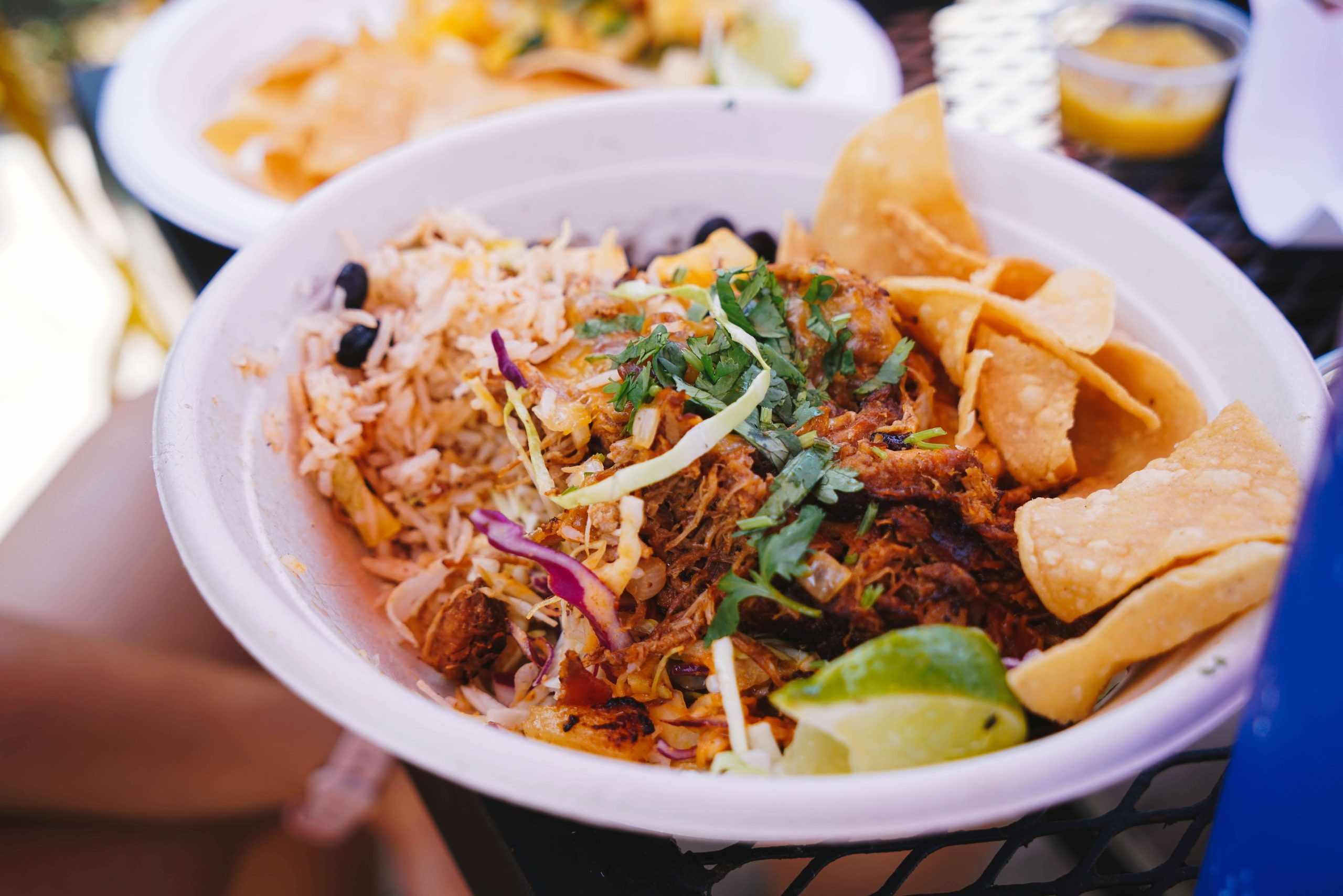If you’ve ever enjoyed a heaping plate of Mexican rice, chances are you’ve never given much thought to the carbs that the dish contains. But the truth is, Mexican rice is surprisingly high in carbohydrates – and if you’re watching your carb intake, then you’ll need to know the facts!
The type of rice used in Mexican dishes often depends on the region of the country. In Mexico, it’s typically long-grain white rice or parboiled white rice. Depending on the dish, other types of rice such as brown rice or whole grain can be used.
No matter what type of rice is used, it’s always a good source of carbohydrates. In fact, a cup of cooked white rice contains about 45 grams of carbohydrates. That’s about the same as a slice of bread.
So why does Mexican rice have so many carbs? It’s because it usually contains a lot of other ingredients that are high in carbs. For example, Mexican rice typically includes onions, tomatoes, garlic, and other vegetables. All of these ingredients are loaded with carbohydrates.
The carbs in Mexican rice can vary depending on the recipe. A traditional recipe might include lard, which adds a lot of fat and calories. And if you use canned tomatoes or tomato sauce, the carbs will be higher than if you use fresh tomatoes.
But that doesn’t mean you have to give up Mexican rice. You can still enjoy it, even if you’re watching your carbs. Here are a few tips for making Mexican rice a bit more carb-friendly.
- First, try using brown or wild rice instead of white rice. These types of rice have fewer carbs and more fiber.
- Second, add plenty of fresh vegetables to your Mexican rice. This will add flavor, color, and texture – and it will also reduce the number of carbs in each serving.
- Don’t forget to add some protein to your Mexican rice. Protein helps to slow the absorption of carbohydrates, which can help to prevent spikes in your blood sugar levels. So, try adding some beans, chicken, or beef to your dish.
Mexican rice can be a delicious, flavorful, and filling meal – even if you’re watching your carbs. By making a few simple adjustments, you can enjoy a plate of Mexican rice without worrying about the carbs.
Low-carb Mexican rice alternatives
My childhood was filled with joyous memories of Mexican food. The vibrant colors, rich flavors, and intoxicating aromas were part of what made my childhood so special. But as I’ve gotten older, I’ve realized that many of my favorite Mexican dishes contain high levels of carbs.
So I started looking for low-carb Mexican rice alternatives that still had that same flavor and texture I was used to.
Fortunately, there are a lot of great options out there! Whether you’re looking for a lighter version of traditional Mexican rice, or you’re looking for something entirely new and exciting, I’ve got you covered. Here are some of my favorite low-carb Mexican rice alternatives.
Cauliflower Rice: This is probably the most popular option when it comes to low-carb Mexican rice alternatives. Cauliflower rice is just what it sounds like – it’s cauliflower that has been processed into a rice-like texture. You can make it yourself with a food processor, or buy it pre-made at most grocery stores. Check also about honey, is honey bunches of oats healthy with cauliflower? Cauliflower rice is a great way to get the same texture and flavor as Mexican rice without all of the carbs.
Zucchini Rice: Another great low-carb option is zucchini rice. It’s essentially the same as cauliflower rice, except it’s made with zucchini instead of cauliflower. Like cauliflower rice, you can make it yourself or buy it pre-made. Zucchini rice has a slightly different flavor than cauliflower rice, but it’s still just as delicious!
Quinoa: Quinoa is a great source of plant-based protein, and it makes an excellent low-carb Mexican rice alternative. It’s high in fiber and protein, so it’ll fill you up and keep you satisfied. Plus, it has a unique flavor that is both nutty and slightly sweet. Quinoa is a great way to add a healthy twist to your Mexican dishes.
Cilantro Lime Cauliflower Rice: This is one of my favorite low-carb Mexican rice alternatives. It’s simple to make, and it tastes amazing! All you have to do is mix together cauliflower rice, freshly chopped cilantro, lime juice, and a pinch of salt. The result is a delicious and flavorful side dish that is sure to please.
Bean-Based Rice: If you’re looking for a vegan-friendly option, then bean-based rice is a great choice. It’s made from black beans, which are high in fiber and protein. When cooked, the beans create a rice-like texture that is both light and flavorful. You can top it with your favorite Mexican-style toppings, or just enjoy it on its own.
Brown Rice: Brown rice is a great low-carb Mexican rice alternative. It’s higher in fiber and protein than white rice, and it has a nutty flavor that pairs perfectly with Mexican dishes. Brown rice is a healthy and delicious way to enjoy Mexican flavors without the high-carb content of white rice.
These are just a few of the low-carb Mexican rice alternatives available. With a little creativity and some delicious ingredients, you can create a Mexican-style meal that is both healthy and flavorful. If you love tuna more then rice, you should know if can you eat tuna out of the can. So don’t be afraid to experiment and explore new flavors and textures!
Carbs in homemade Mexican Rice
As a food enthusiast, I love to experiment with different cuisines in my kitchen. Mexican food has always been one of my favorites, and rice is an essential component of many Mexican dishes. One of the most popular variations of rice in Mexican cuisine is the homemade Mexican rice. However, as someone who watches my carb intake, I was curious about the amount of carbs in this dish. So, I decided to do some research and share my findings with you.
First things first, let’s talk about the basic ingredients of homemade Mexican rice. The traditional recipe includes long-grain white rice, tomatoes, onion, garlic, chicken broth, and some spices such as cumin and chili powder. However, some people also add other ingredients like corn or bell peppers to enhance the flavor.
Now, let’s break down the carbs in each of the primary ingredients of homemade Mexican rice:
Long-grain white rice: The primary source of carbs in Mexican rice is long-grain white rice. One cup of cooked white rice contains around 45 grams of carbs. However, the amount of rice used in the recipe varies depending on the number of servings, and the recipe itself. But, typically, a serving of homemade Mexican rice contains about 30-40 grams of carbs.
- Tomatoes: Tomatoes are low in carbs and can add a ton of flavor to the dish. One medium-sized tomato contains around 4 grams of carbs.
- Onion: Onion is another low-carb ingredient used in Mexican rice. One medium-sized onion contains around 11 grams of carbs.
- Garlic: Garlic is a low-carb ingredient that can add a lot of flavor to the dish. One clove of garlic contains around 1 gram of carbs.
- Chicken broth: Chicken broth is a low-carb ingredient that is used as a base in Mexican rice. One cup of chicken broth contains less than 1 gram of carbs.
- Spices: Spices like cumin and chili powder are used to add flavor to the dish. These spices are low in carbs and do not add a significant amount of carbs to the dish.
Based on the above information, we can conclude that homemade Mexican rice is not a low-carb dish. However, it is not excessively high in carbs either. A serving of Mexican rice contains around 30-40 grams of carbs, which is still within the daily recommended carb intake for most people.
If you want to reduce the carb content of Mexican rice, there are some simple tweaks you can make to the recipe. Or simply pick another dish like scallion pancakes. Here are some suggestions:
Use cauliflower rice instead of white rice: Cauliflower rice is an excellent low-carb alternative to white rice. You can use cauliflower rice in place of white rice in the recipe to reduce the carb content of the dish.
- Use less rice: You can use less rice in the recipe to reduce the carb content of the dish. You can also add more vegetables to the recipe to make up for the reduced amount of rice.
- Use low-sodium chicken broth: If you are concerned about sodium intake, you can use low-sodium chicken broth in the recipe. This will not affect the carb content of the dish, but it will reduce the overall sodium content.
- Add more protein: Adding more protein to the dish can help balance out the carb content. You can add chicken, beef, or beans to the recipe to increase the protein content.
In conclusion, homemade Mexican rice is a delicious dish that is a staple in Mexican cuisine. While it is not a low-carb dish, it is still within the daily recommended carb intake for most people. If you are watching your carb intake, you can make some simple tweaks to the recipe to reduce the carb content without sacrificing flavor.

